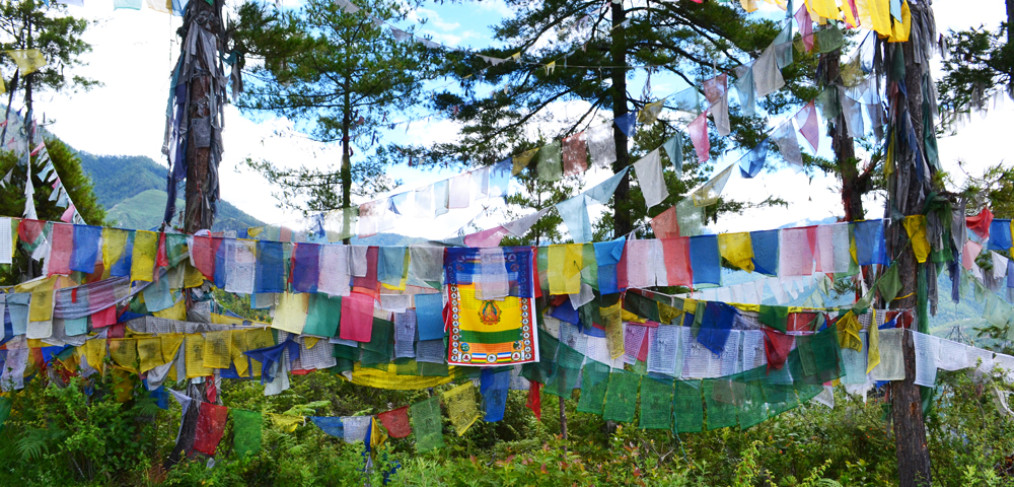
Bhutanese Prayer Flags
For centuries, prayer flags have been part of Bhutanese people’s tradition, symbolizing the reality and pervasiveness of their belief.
Generally, in Bhutan, prayer flags are hoisted for happiness, long life, prosperity, luck, merit and to offer karmic merit to all sentient beings. After one dies, the benefits of offering prayer flags is believed to guide the soul of the dead away from the netherworld and to prevent it from being reborn in the three lower realms (Nge Song Sum, animals, pret and life in hell) of the six life cycles: Lha (god), Lha Min (demi God), humans, animals, pret, and life in hell, according to a Buddhist scholar, Dasho Lam Sanga.
Prayer flags are raised outside homes, hung on bridges, hilltops, and places of spiritual importance, for a very special reason, “By doing so, it gives the wind the opportunity to move them and activate the blessings. The wind is considered an expression of mind and mental energy which activates them,” said the scholar. When the shadow of the prayer flag falls on streams and rivers, it is carried to larger water bodies like seas and oceans and benefits the marine fauna.
There are generally three types of printed prayer flags : Lungdhar or Chudhar, Lhadhar and Mani or Baza Guru dhar which are inscribed with auspicious symbols, invocations, prayers, Ngas (mantras), prints of Buddhist protectors and enlightened beings.
Five visual expressions are used in the Lhadhar each with a symbolism. The Flying Horse symbolizes an accomplishment of positive works. Garuda, Bja Chung, eating snake is meant to frighten-away evil wills and intentions. The Dragon symbolizes the removal of different threats from the sky like the thunderbolts and the spread of the dharma. The Tiger symbolizes success in each step of life without any hurdles, and the Lion, a front-runner in each step of life.
According to scholars, prayer flags benefit in four different ways: through sight (Thondroel), sound (Thoedroel) of the fluttering flags, thought (Dendroel) and touch (Regdroel). They are fastened to wooden poles vertically or sewn on to ropes horizontally (in case of chudhar). Yellow, green, red, white and blue colors are used in Lungdhar, depending on the element (fire, water, wood and earth) one belongs to.
One common belief while passing by the prayer flags is that one should keep the flags to the right. It is believed that prayer flags embody the Ku, Sung and Thu, (speech, body and mind) of the saints and circumambulating a prayer flag earns merit in the same way like when we circumambulate a Choeten, lhakhang or a dzong. When the prayer flag print fades, it should be properly disposed or burned. Tearing down the printed cloth or contaminating it is a sin.
Prayer flags are a common sight everywhere in Bhutan today symbolizing the ever flourishing Buddhism and ever growing faith of the people.
Source: Ugen Penjore, Kuensel Issue 2003.
